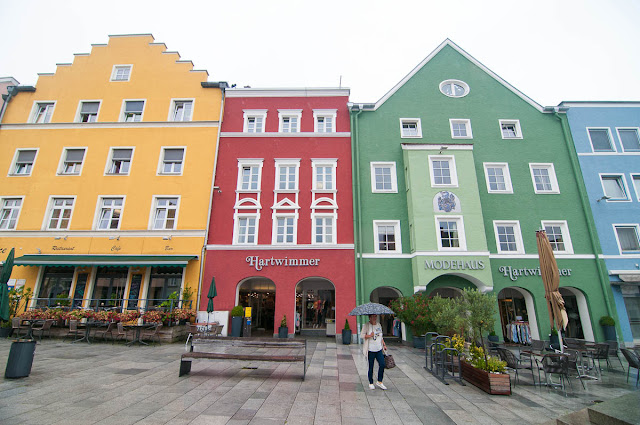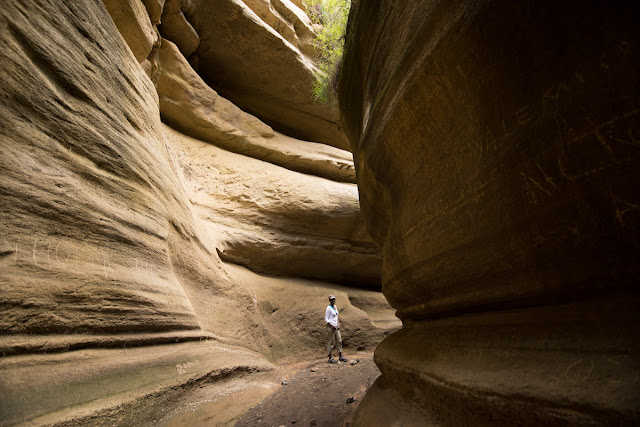Italy: The Trevi Fountain Tourist Trap
The Fontana di Trevi has all the warning signs of a typical tourist trap. Huge crowds of tourists. Billions of identical pictures online. A money making scheme (though this one is a bit surprising). Pickpockets galore.
And yet, when you turn the corner of the narrow and twisting cobbled streets and into the tiny square (and yes, it will be crowded with tourists), you will still not be prepared by how exquisite it is. The sculptures and facade totally dominate the space which is created by a meeting of 3 narrow streets. Hence the name - Trevi means 'three roads'.
Compared to a lot of other Roman monuments, the Trevi Fountain is relatively young - it was finished in 1732. However, the aqueduct that ends at that point has been serving Rome since 19BC, named the Aqua Virgo, was built during the reign of Augustus. These aqueducts were the real pieces of art. The Aqua Virgo drops vertically only 4 meters in its 20 kilometer course. In its heyday, it was delivering 100,000 cubic meters of water to Rome daily.
The tradition is that if you throw a coin into the fountain, you will return to Rome. It is a profitable tradition - it is said that 3,000 Euros are collected from the fountain. By the way, that's every day.
Then we hit the picturesque streets again as the sun started to set. Eventually we came to the famous Spanish steps (paid for by a French diplomat), built to connect the church above (owned by the French) to the square below (owned by the Spanish). As you climb, you pass the house that the poet John Keats (remember him? we talked a bit about him here) once lived in.
As you walk up, you pass all kinds of people. It has long been a tradition for artists and others to meet and hang out at the Spanish steps. The steps have also featured in countless movies and songs. At the top there will be this church - the Trinita dei Monti. Turn left onto the Piazza Della Trinitaria dei Monti.
Soon you will come to the imposing villa Medici to your right. It was owned by the powerful and influential Medici family. They filled it with art (as they did with many things they owned.)
Much later, in 1803, Napoleon Bonaparte moved the French academy here. They still run the place as a gallery and residence for French artists. To your left will be this massive fountain from 1859 made out of 2 basins of red granite from ancient Rome, and an exquisite view of Rome.
Keep on walking and you will come to the Pincio Promenade, and if you time it right, you get to see the sun setting over Rome with the grand Piazza del Popolo in the foreground. It brought back fond memories of my first visit to Rome, many years ago. It was the very day when Antony and I, both single and impressionable, first arrived. Our friends didn't give us any time to unpack, rest or any other such mundane things. We had to go out to see Rome at night. They led us through the cobbled streets and we popped out into this very same piazza. The city had put on a public showing of an opera - Don Giovanni. We climbed up onto the wall at the back of the piazza, understood nothing of what was being sung, and fell in love with Rome. Then we walked past the Spanish steps, had some of the best pizza I had ever had up to that point in my life (before I tasted Sandi's, obviously) and made a crazed dash through the streets to catch the last metro home.
I leave you with the quintessentially Italian (and true) story of Roberto Cercelletta, also known by the nickname of D'artagnan. From 1968 onwards, every night, Roberto would go the Fontana di Trevi and fish out the coins that the tourists threw in by day. It seems no one realized how much money he was collecting. When they tried to stop him, it was complicated by the fact that there was no legal basis since the money had been thrown away. Additionally, Roberto had little in the way of worldly belongings beyond his cell phone and moped. Asked what he did with the money, he said he shared it with other homeless and needy people. He even made the cover of the New York Times.
And yet, when you turn the corner of the narrow and twisting cobbled streets and into the tiny square (and yes, it will be crowded with tourists), you will still not be prepared by how exquisite it is. The sculptures and facade totally dominate the space which is created by a meeting of 3 narrow streets. Hence the name - Trevi means 'three roads'.
Compared to a lot of other Roman monuments, the Trevi Fountain is relatively young - it was finished in 1732. However, the aqueduct that ends at that point has been serving Rome since 19BC, named the Aqua Virgo, was built during the reign of Augustus. These aqueducts were the real pieces of art. The Aqua Virgo drops vertically only 4 meters in its 20 kilometer course. In its heyday, it was delivering 100,000 cubic meters of water to Rome daily.
The tradition is that if you throw a coin into the fountain, you will return to Rome. It is a profitable tradition - it is said that 3,000 Euros are collected from the fountain. By the way, that's every day.
I am not sure how they do it, but Italian tourist traps somehow manage to be so charming that you forgive them. In this case, it is free to see, there are no people trying to sell you stuff, and the surrounding cobbled streets are full of great little coffee shops (reasonably priced so long as you stand at the counter!) and restaurants.
In our wanderings, we must mention 'the typewriter', or to give it's more pompous official name, the Monumento Nazionale a Vittorio Emanuele II. This imposing building was designed in 1885 and finally completed in 1935. It was built in honor of Vittorio Emanuele II, who was the first king of the kingdom of Italy. Yes, I was also surprised to learn that Italy was a kingdom, and had a king!
Then we hit the picturesque streets again as the sun started to set. Eventually we came to the famous Spanish steps (paid for by a French diplomat), built to connect the church above (owned by the French) to the square below (owned by the Spanish). As you climb, you pass the house that the poet John Keats (remember him? we talked a bit about him here) once lived in.
As you walk up, you pass all kinds of people. It has long been a tradition for artists and others to meet and hang out at the Spanish steps. The steps have also featured in countless movies and songs. At the top there will be this church - the Trinita dei Monti. Turn left onto the Piazza Della Trinitaria dei Monti.
Soon you will come to the imposing villa Medici to your right. It was owned by the powerful and influential Medici family. They filled it with art (as they did with many things they owned.)
Much later, in 1803, Napoleon Bonaparte moved the French academy here. They still run the place as a gallery and residence for French artists. To your left will be this massive fountain from 1859 made out of 2 basins of red granite from ancient Rome, and an exquisite view of Rome.
Keep on walking and you will come to the Pincio Promenade, and if you time it right, you get to see the sun setting over Rome with the grand Piazza del Popolo in the foreground. It brought back fond memories of my first visit to Rome, many years ago. It was the very day when Antony and I, both single and impressionable, first arrived. Our friends didn't give us any time to unpack, rest or any other such mundane things. We had to go out to see Rome at night. They led us through the cobbled streets and we popped out into this very same piazza. The city had put on a public showing of an opera - Don Giovanni. We climbed up onto the wall at the back of the piazza, understood nothing of what was being sung, and fell in love with Rome. Then we walked past the Spanish steps, had some of the best pizza I had ever had up to that point in my life (before I tasted Sandi's, obviously) and made a crazed dash through the streets to catch the last metro home.
I leave you with the quintessentially Italian (and true) story of Roberto Cercelletta, also known by the nickname of D'artagnan. From 1968 onwards, every night, Roberto would go the Fontana di Trevi and fish out the coins that the tourists threw in by day. It seems no one realized how much money he was collecting. When they tried to stop him, it was complicated by the fact that there was no legal basis since the money had been thrown away. Additionally, Roberto had little in the way of worldly belongings beyond his cell phone and moped. Asked what he did with the money, he said he shared it with other homeless and needy people. He even made the cover of the New York Times.













